It took about six weeks of self education before I made my first batch of cold process soap. I read scads of blog posts, devoured several books and marathon-watched YouTube soaping videos. Then I did it all over again. Finally I got up the nerve to make my first soap.
Since I was just starting out, I didn’t have any fragrance or colorants. I’d read enough to know that I could use certain herbs or spices to color my soap. I had several spices that were getting too old to use for cooking, so I put 2 tablespoons of turmeric in a half pound batch of soap.
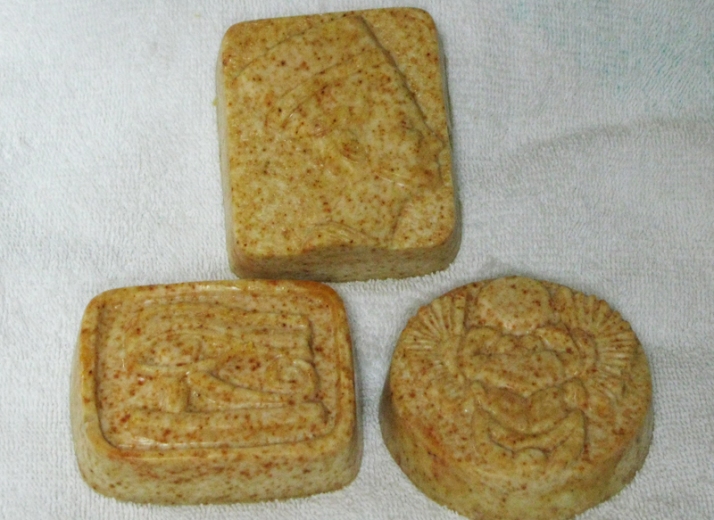
Soap colored with turmeric, fresh out of the mold.
What I didn’t know then that I know now is that spices added to the soap batter at trace without being infused with oil first will give a speckled look. It was a nice surprise! I liked it. If too much is used, it can give a scratchy feel to the soap. It turned out fine.
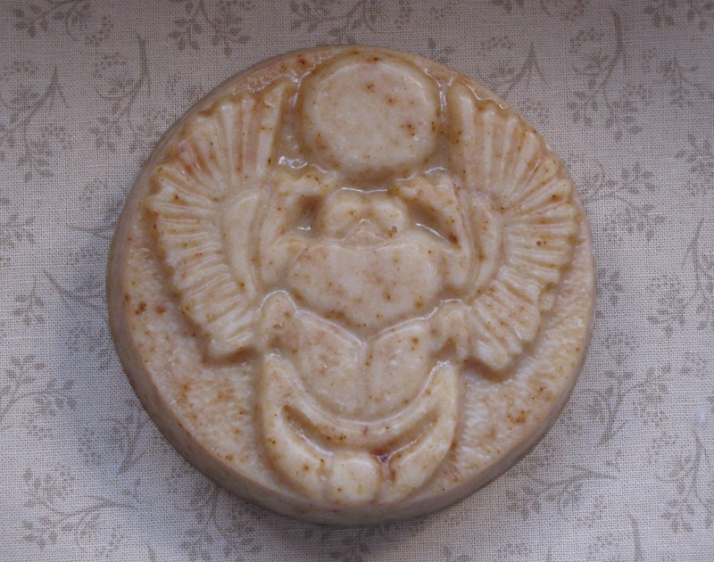
Turmeric soap, three weeks old.
What I also didn’t know then was that plant colorants fade from exposure to light, even if they’re never in direct sun. And there’s nothing you can do about it. There is such a thing as a UV light inhibitor, sold on Brambleberry. However, the Soap Queen says it’s for melt and pour soap and doesn’t really work on cold process.
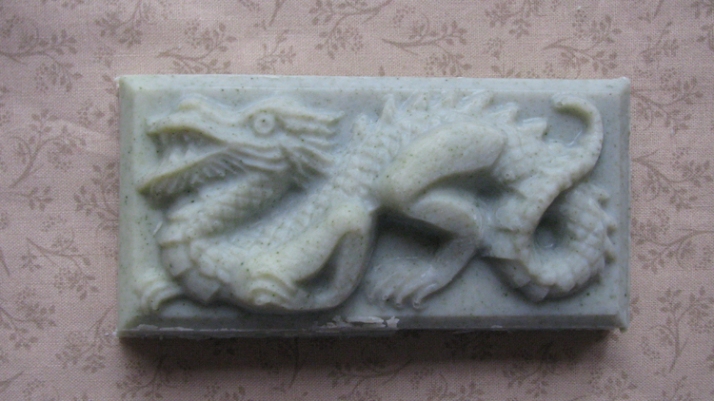
I had worse luck with spirulina. I’d read what a great colorant it was, but I wasn’t sure how much to use. I put 3/4 teaspoon into a 2 pound batch of soap batter. The batter got very dark, so I thought it was enough. The soap turned out a very pretty shade of green. I was very happy with it!
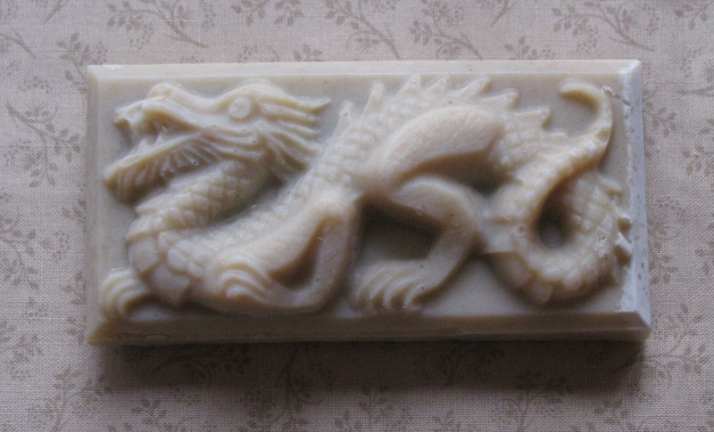
I was not so happy less than three weeks later when it looked like this.
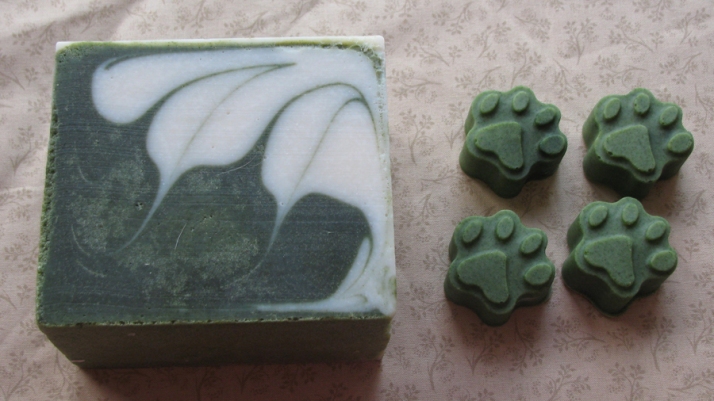
The next time I used spirulina, I used 2 teaspoons in a one pound batch. Now, that deep green is more like it! But when I cut it, it STUNK!! Smelled like something died in the swamp. Spirulina is an algae, so it has kind of a dirty aquarium smell. The cut soap smelled like a dirty aquarium with a dead fish in it. I was all set to throw it in the trash, but I first posted my experience on one of the Facebook soaping groups. The overwhelming consensus: don’t trash it! The smell may dissipate when cured. I had nothing to lose, so I kept it out of sheer curiosity. Started referring to it as the Swamp Bars. A couple of days later, it did stink less, but it already started losing color.
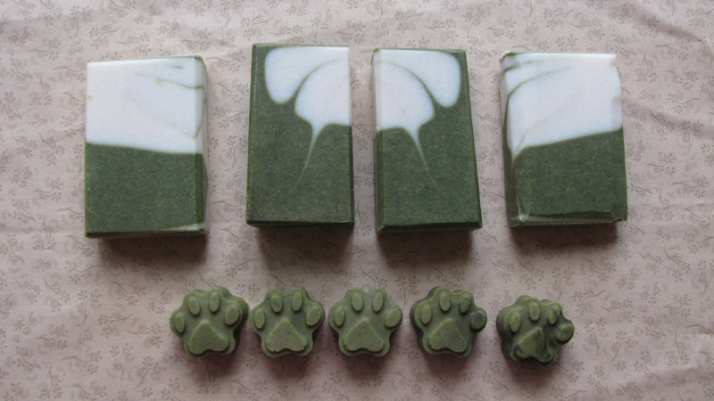
Eight days after I made them, the spirulina batch had already faded by several shades.

Two months after making this batch, the swamp bars made with spirulina have faded to a drab olive color.
A few weeks later, the swamp bars faded to olive drab. Very drab. This is their final color. They still smell funky to me, but a friend who doesn’t care for sweet floral fragrances likes it.
I had the reverse experience with alkanet. Alkanet is supposed to give lovely shades of blue to purple. No matter what the amount I used, I ended up with brown soap and several shades darker than when it came out of the mold. Many plant colorants will turn brown when interacting with lye, especially if the plant material is fresh. It’s also possible that I’ve only gotten brown with alkanet because I use tap water instead of distilled water to make my soap. I’m on a budget and don’t want to buy anything I don’t absolutely have to, plus I don’t like all the plastic water jug waste, even though I put it into the recycling bin. I haven’t had any problems with my tap water soap (I run the water through a Brita filter before putting it into the soap), so as long as I live in my current location, I’ll still use it.
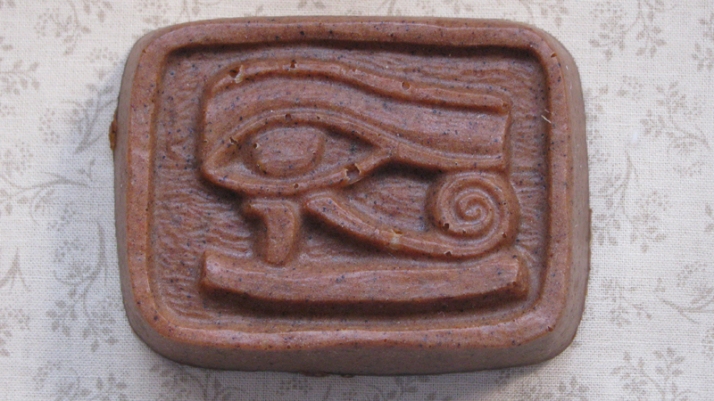
Two months after unmolding, the cinnamon/paprika soap has held its color.
The only plant colorant I’ve used that didn’t fade or morph is the batch made with cinnamon and paprika. It has held its color from the day I took it out of the mold. However, I was warned by a soaper on Facebook that she used cinnamon to color a batch of soap, and when she used it in the shower, it was “very unpleasant.” She didn’t go into detail, but I’m guessing it probably burned or stung. The cinnamon I used was years past its expiration date and barely had any scent left, so I doubt that it would have any adverse effects. I’ve since learned that the paprika was responsible for the color. I made another batch of turmeric colored soap and added a tiny bit of paprika. It instantly turned medium brown, just like this.
These mostly disappointing experiences have completely put me off natural colorants. I want more control over the colors in my soap, and I want them to last. I’ve had far better luck with micas. The choice is up to you.
I’m using the dragon soap right now and I really like the fragrance! It lathers really well!
LikeLike
Glad you’re enjoying it!
LikeLike
The green spirulina soaps with the white swirls look really very pretty, and you have bevelled them beautifully. I can see you getting more & more enjoyment in your soap-making endeavours.
LikeLiked by 1 person
Thanks, Countess! I’m constantly learning, and that not only makes it fun but helps improve my technique. A new concept a day keeps the Alzheimer’s away!
LikeLike